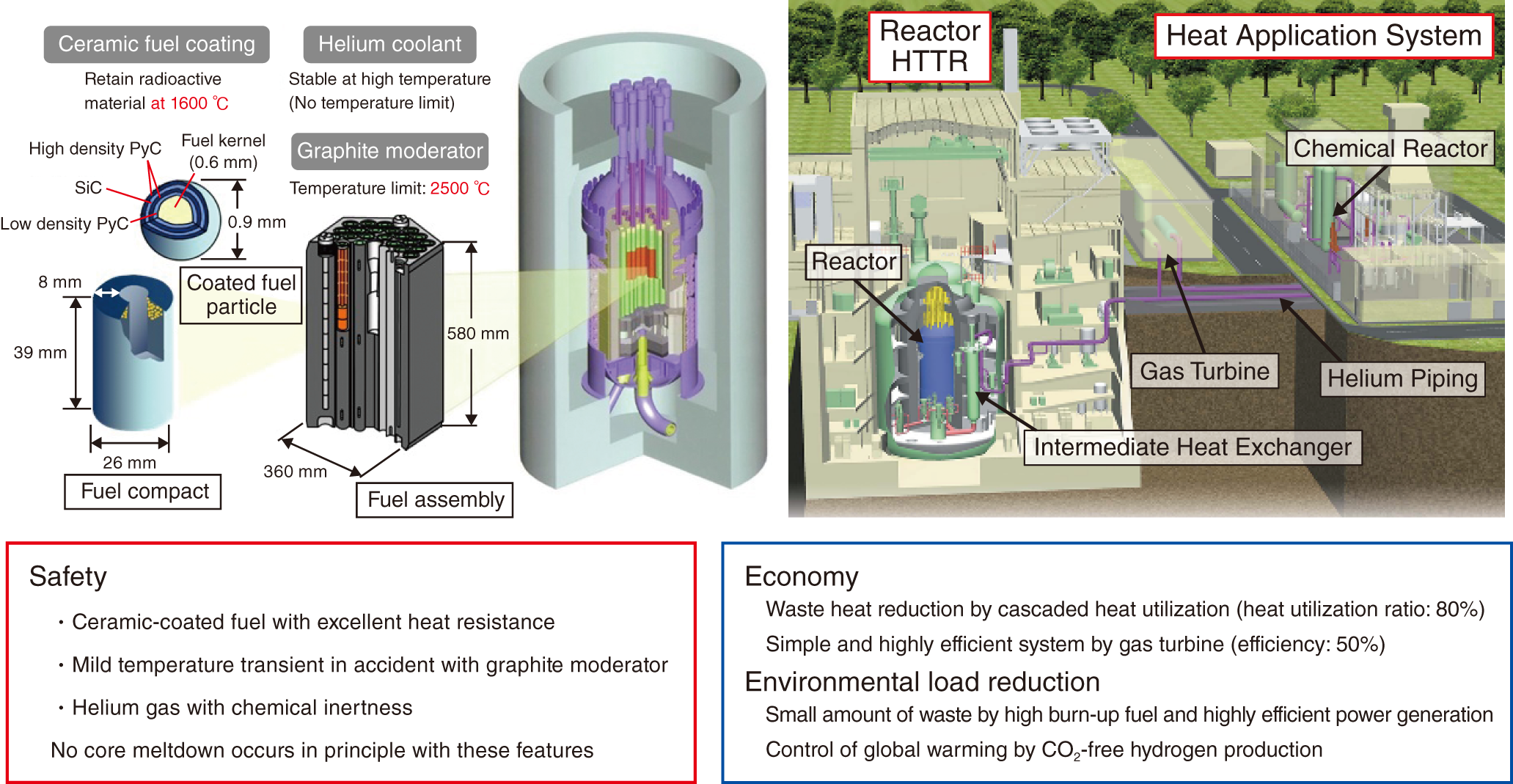
Fig.6-1 Features of HTGR
To remedy the fragility of our country’s energy-supply-demand structure arising from excessive dependence on fossil-fuel resources from abroad while simultaneously reducing greenhouse-gas emissions in response to global warming, Japan’s basic philosophy is to advance nuclear-energy utilization on the premise of ensuring safety. We expect to use nuclear energy not only for power generation but also for various heat applications. “The Strategic Energy Plan” and “The Growth Strategy 2017”, decided by the cabinet, list promotion of research and development of a High Temperature Gas-cooled Reactor (HTGR) as a national policy because such reactors have excellent inherent safety characteristics and meet the energy demand for various industries. Reflecting on this social situation, the HTGR forum is developing strategies for commercializing HTGRs and deploying Japanese HTGR technologies overseas.
An HTGR can supply heat at a temperature of 950 ℃ using fuel particles coated with ceramics, graphite-core material, and inert helium and can be designed as a meltdown-proof reactor in the case of any severe accident. The High Temperature engineering Test Reactor (HTTR) was constructed using the most advanced HTGR technologies developed in Japan, including coated-fuel-particle-fabrication technology with excellent fission-product-retaining performance and large-scale graphite-fabrication technology with high strength and irradiation resistance; it generated a temperature of 950 ℃ in 2004 for the first time in the world and demonstrated a stable supply of heat over a 50-day operational period at 950 ℃ in 2010. We have demonstrated that even if the reactor-cooling system shuts down and the reactor scram fails, the reactor itself naturally shuts down and remains in a stable condition.
HTGR has excellent features that allow it to respond to the needs of various industries, such as highly efficient power generation with a helium-gas-turbine system, hydrogen production (Fig.6-1), and seawater desalination using waste heat from a gas-turbine system.
In this study, we promote the design of the HTTR-cogeneration system toward demonstrating nuclear-heat applications (Topic 6-1), propose an innovative heat exchanger as an essential component of the HTGR heat-application system (Topic 6-2), and verify the thermal-load responsibility using an inventory-control method in which the coolant pressure is controlled to manage the reactor power (Topic 6-3). We also research core design using highly oxidation-resistant fuel (Topic 6-4). In the field of heat-application research, we also conduct thermochemical hydrogen-production tests of the innovative iodine-sulfur process at a continuous-hydrogen-production-test facility made of industrial materials (Topic 6-5). Moreover, we develop a temperature-measurement technique using melt wire to estimate the core temperature of the HTTR (Topic 6-6).
We are preparing to resume operation of the HTTR by conducting a conformity review on new regulatory requirements issued by the NRA after the Great East Japan Earthquake.